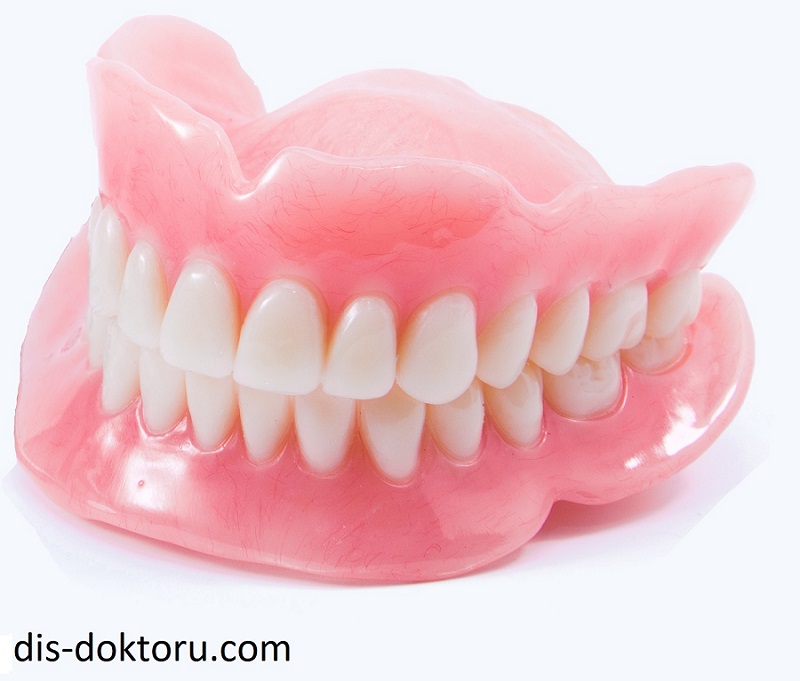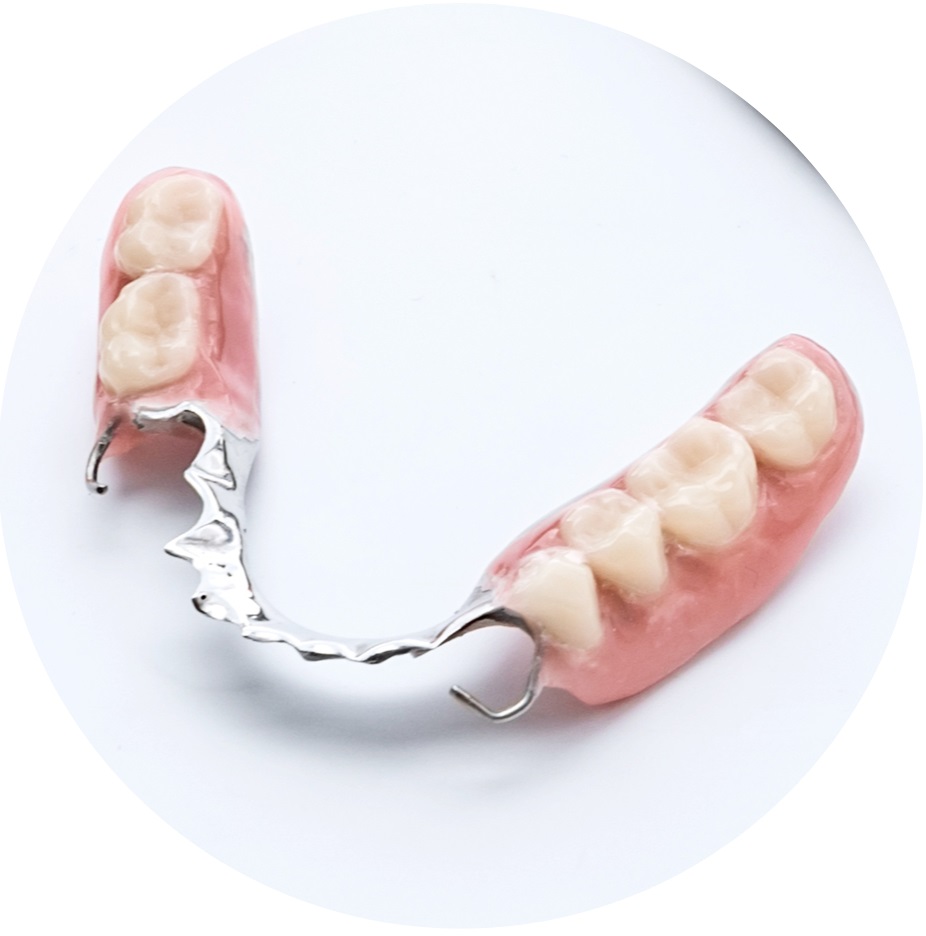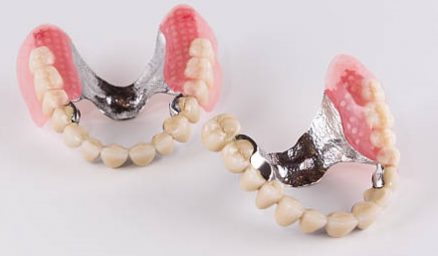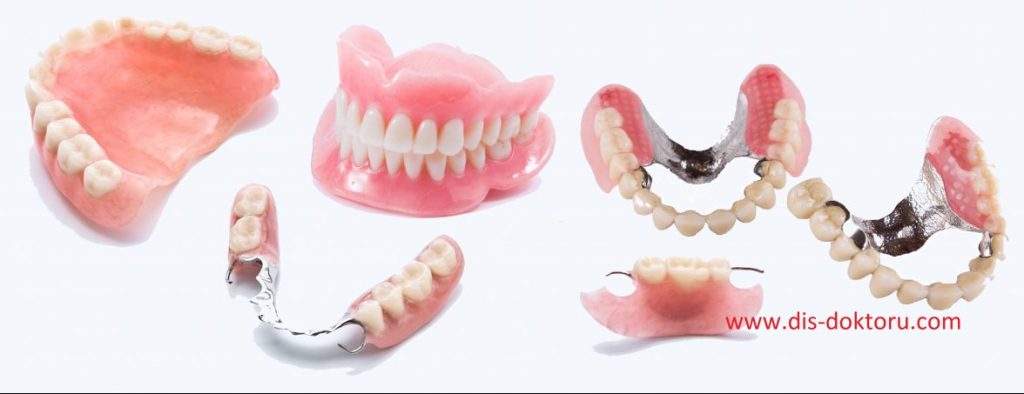Removable dental prostheses are removable devices used to replace lost teeth and allow you to smile without worry.
Removable dental prostheses are divided into two; full dentures and partial dentures.
FULL PROSTHESES (TOTAL)

Total dentures are an application that can be done if you have no teeth left in your mouth. They are prostheses made of acrylic, which can stay in the mouth with the vacuum force by taking support over the bone tissue remaining in the lower and upper jaws.
PARTIAL DENTURES (PARTIAL DENTAL PROSTHESES): These are removable prostheses that transmit the chewing pressure to the jawbone over the mucosa (soft tissue on the jawbones) through the natural teeth and the base plate via the retainer arms (clips).

Partial dentures are applied to patients whose number and position of natural teeth are not sufficient for the construction of fixed bridge prosthesis. These prostheses can be easily removed by the patient and re-attached after necessary maintenance.
With the use of this prosthesis, not only the teeth, but also the supporting tissues, the amount of which are reduced due to bone resorption, are completed. A correctly planned prosthesis also tolerates some wrinkles and collapses in the soft tissues that occur especially in the lip and cheek areas of the patient with age. Partial dentures help to achieve a natural smile.
Partial dentures can be made with hooks (crochet) and precision attachment (attachment). The hook is not visible in precision-retained prostheses. Therefore, it is more aesthetic.
Partial Prostheses with Crochet (Hook)

Removable prostheses are applied in cases where the abutment teeth cannot bear the load, there is a large tooth deficiency or there are missing tooth areas that do not end with the tooth. If there is a tooth to be taken as an abutment in the mouth, a partial denture is made. Partial denture is the application of tooth and tissue supported prosthesis. For tooth support, the tips called crochet come to the part of the tooth under the convex area close to the gingiva, and retention is provided. The tissue surface on which the prosthesis sits provides tissue support. Thus, the force is distributed to the tooth and tissue.
Partial prosthesis with hooks is shown in the video below;
Partial Dentures with Precision Attachment

Clasps in removable partial dentures can cause aesthetic discomfort, especially in anterior teeth. In addition, the force that will be applied to the teeth with insufficient gingival health with a crochet may cause the loss of the tooth. In these cases, the force that will come to a single tooth can be distributed by connecting the crowns and teeth to each other. Precision attachment dentures are a type of combined prosthesis in which edentulous cavities are supported by removable dentures, and the shape, color and position defects of the existing teeth are corrected in fixed dentures. While fixed crowns are being made, ready-made materials called precision retainers are placed on the parts close to the edentulous area. Thus, instead of the non-aesthetic crochet placed on the crown, a retention system that does not disrupt the aesthetics that is not seen in the mouth is provided.
BENEFITS OF DENTAL PROSTHESES
- Eating disorders caused by missing teeth are eliminated.
- Digestive system disorders caused by insufficient chewing due to missing teeth are prevented.
- Aesthetic appearance and smile are provided.
- Speech disorders due to missing teeth are corrected.
- Aesthetics is provided by preventing the cheek and lip collapse towards the areas where there are missing teeth.
- Psychological problems caused by missing teeth are eliminated.
The benefits of dental prosthesis are shown in our video below.
What is the ideal life of prostheses? Can it be used for a lifetime?
The lifespan of the prosthesis is considered to be 5-10 years. But there are those who use it for longer periods of time. Dental prostheses can be considered successful if they stay in the mouth for approximately 5 years. However, it is not possible to use the dentures for a lifetime due to the changes in the tissues and existing teeth over time, the abrasions that occur in the dentures, and the oral environment being affected by all kinds of foods that are eaten and drunk. It is beneficial to visit the dentist annually in order to prevent damage to the oral tissues as a result of the long-term use of dentures.
WHAT ARE THE RULES TO BE FOLLOWED FOR PATIENTS WHO WILL USE NEW PROSTHESIS?
- The prosthesis will initially feel foreign (different) and large. No matter how thin it is made, swelling can create a feeling of fullness on the lips and cheeks.
- Getting used to the lower denture is more difficult than the upper denture and takes longer. The lower prosthesis may become dislodged and become more movable.
- In the first days of using the prosthesis, saliva secretion may increase. It will be back to normal in a few days.
- It is very rare that the patient does not have any complaints after the prosthesis is placed.
- No matter how carefully the prosthesis is made, as a result of sitting on soft tissues and moving during function, there may be bumps (small gum irritation) in some places. The patient must come on the days the dentist tells, and the prosthesis bumps (small gum irritation), corrections in the prosthesis should be made by the dentist. It is absolutely wrong to take the bumps by the patient, it can exacerbate the problems of the prosthesis.
- If the denture is used for at least 10-12 hours, the dentist can better see the dents (minor gum irritation). And can easily fix it.
- As the tissues adapt to the prosthesis, the problems will disappear.
- It may take 2-3 weeks to get used to the prosthesis.
- Your dentist should see you 24-48 hours after the denture is placed.
- When the prosthesis is first used, eating should be started with soft foods. It should be divided into small pieces and chewed slowly.
- Hard and hard-to-chew foods should not be eaten without getting used to the prosthesis and gaining experience .
- Try to use both sides of your jaw while eating, chewing using the back teeth.
- In the first weeks, it should not be bitten with the front teeth.
- Learning to chew with your prosthesis takes time, you must be patient.
- It may take 6-8 weeks to be able to eat normally in full dentures.
- Initially, there may be lip and cheek biting. Food should be eaten with the lips closed.
- Chewing force should not be expected from dentures like natural teeth (1/3 – 1/6 less)
- It can be difficult to talk properly with prostheses at first. In such a case, the practice of speaking aloud can be done.
- Initially, the prosthesis may dislodge when coughing or laughing; It can be put back into place with a light bite.
- When you first start using the prosthesis, the appearance of your face may seem different to you. Your appearance will return to normal when the prosthetic cheek adapts to the lip muscles.
- The appearance of artificial teeth is beautiful and healthy. When you are comfortable and behave, it will be natural in your appearance.
- After you start using your prosthesis, remove it at night. Thus, you will rest the oral tissues.
- When the dentures are removed at night, they should be left in a glass of water.
- The life of the prosthesis is 4-5 years.
HOW TO MAINTAIN A DENTAL PROSTHESIS?
- The denture should be cleaned after every meal.
- With the denture cleaning brush, we should brush inside and outside without applying force.
- Toothpaste or active cleaning tablet should be used in the cleaning process.
- Materials such as bleach, salt spirit and detergent should not be used for cleaning.
- Consult your dentist when you think your denture is loose or needs repair.
REGULAR CONTROLS OF DENTAL PROSTHESIS
People with natural teeth and patients using full dentures should visit the dentist at regular intervals (at least once a year). The tissues under the dental prosthesis may change due to various reasons. Over time, the compatibility of the dental prosthesis with the tissues may deteriorate. You may not notice this situation.
The success of a new dental prosthesis is as much dependent on the patient as it is on the dentist. With patience and a positive approach, you can be one of those who use dental prosthesis comfortably.
How much does a dental prosthesis cost?
Dental prosthesis fee varies according to the type of prosthesis to be made and the number of teeth in the prosthesis. After the examination in our clinic, we can give more precise information.
Removable Dentures ➔ Our Dental Clinic is in Gebze
Our Dental Clinic is in Gebze District of Kocaeli. It is close to Darica, Bayramoğlu, Çayırova, Dilovası.
View our Dental Clinic (Gebze) on the map >>>
